11/22 – 04/23 Copenhagen, DK
‘Our Architecture’ presents the work of Danish firm Vilhelm Lauritzen Arkitekter, looking from the retrospective to present day projects, and with visions towards the future. Spanning over 100 years, the impact of work by the company can be experienced throughout Denmark, with an extensive and ongoing list of landmark public projects, including schools, hospitals, concert halls, airports and more.
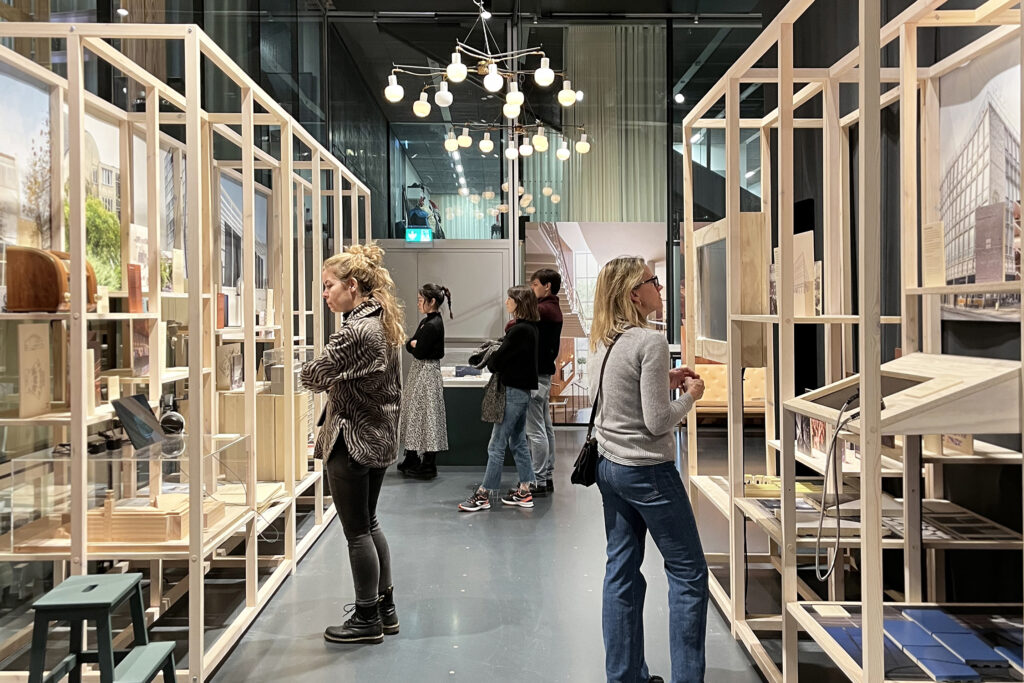
At DAC, the scale and quality of the exhibition is appropriate to that of the venue, and to the work of Vilhelm Lauritzen Arkitekter. The first impression is that the space is open, welcoming and designed firmly with the visitor in mind. The layout foregoes the inclusion of a spatial plan or graphic overview of the zones, however orientation is made obvious by clearly presented, well-positioned, introduction panels. The extensive range of displayed content is mostly housed within open timber structures lending a furniture-like quality to the experience (Image 1). The space is broadly divided into six zones, separated by grey curved, translucent curtains – clearly demarcating specific themes, but allowing the visitors sight-lines throughout the large space. Projects are divided into Culture, Transport, Education, Healthcare, Housing and Workplace.
Within each timber display structure, project-based content reveals much about the design approach of the practice – seemingly catering for all levels of interest and expertise. Large scale photography shows key aspects of the projects, supported by selected drawings, models, prototypes, relevant artefacts, text, video and materials.
Throughout the exhibition, material samples feature heavily, reinforcing the tactile and functional side to the work. Materials are also the focus of the more future-facing parts of the exhibitions, pointing towards the importance of material innovation and literacy in the quest for greater sustainability. This area goes further to achieve impact, by accommodating school-age visitors, utilising both digital interactives and analogue tasks. The large interactive ‘learning table’ allows children of all ages to explore the transformation of raw natural materials into elements of construction (image 2).
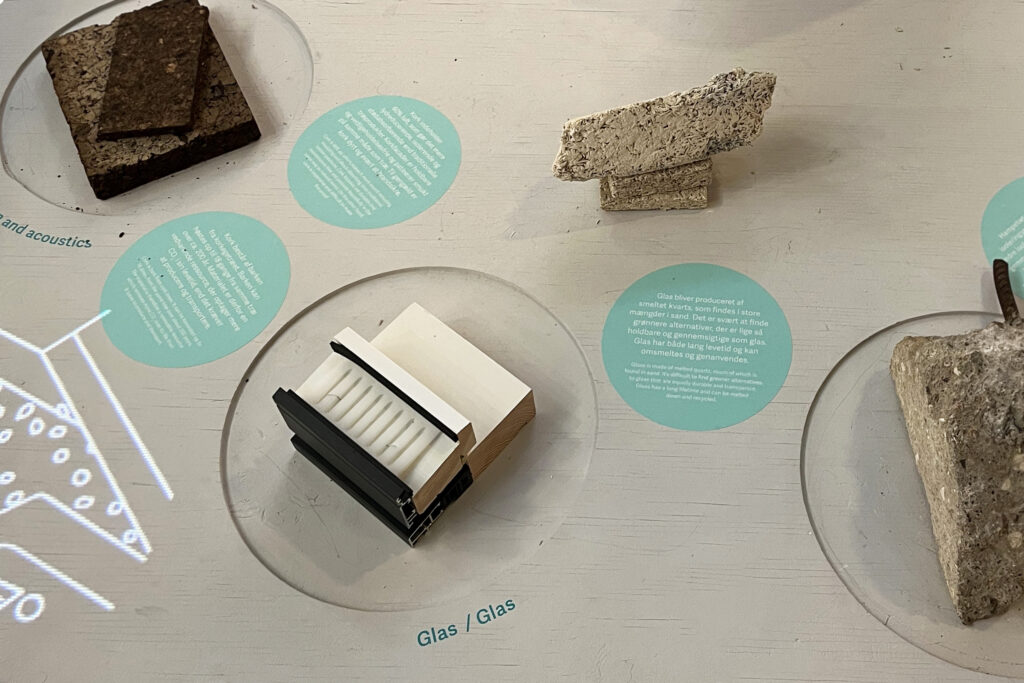
A highlight of the exhibition takes the form of a large-scale physical model of Copenhagen Airport (the first terminal designed by Vilhelm Lauritzen Arkitekter in 1930’s, which has inspired and informed future developments). This centrepiece asserts its presence within the space, as a white 3D model supported on a large oval plinth. Technology adds a vital layer of information to the model, becoming animated through digital projections of passengers and aircraft, that bring the model to life in a representation of the activity and scale of the airport. The spectacle, developed with Copenhagen-based agency, Dark Matters, draws attention from visitors of all ages. (image 3).
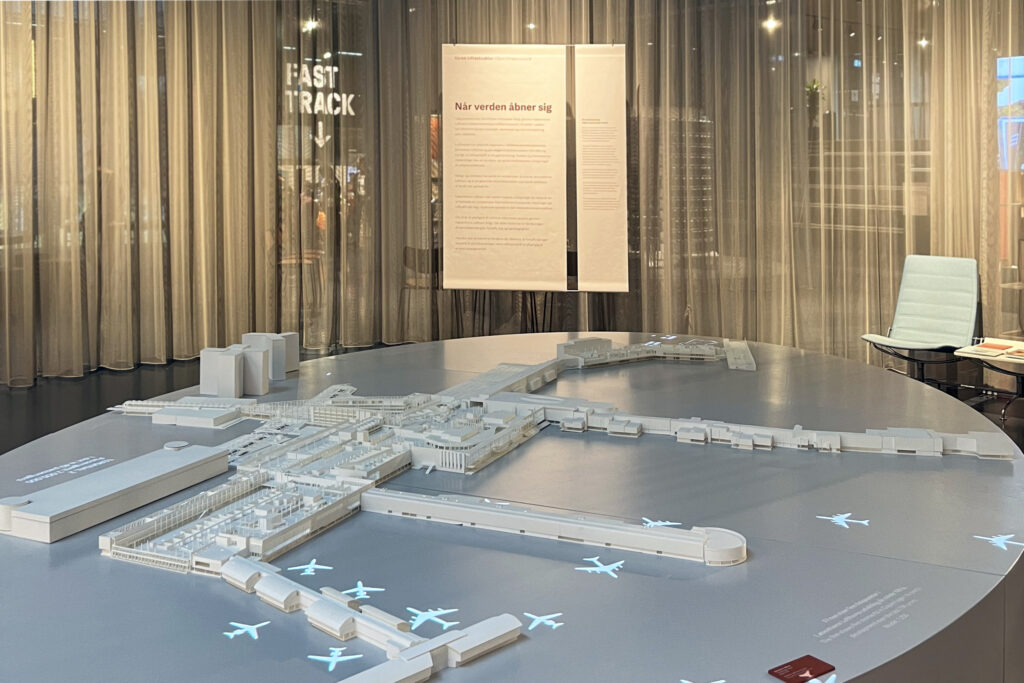
Leonora Østerby who works as an educator for DAC explained how the exhibition forms part of numerous activities she runs with school groups. Often these lead out into the city, to focus on specific questions around architecture. Her personal mission is to help participants develop their own opinions towards architecture, and to highlight how it forms more than just the buildings we encounter. Within the exhibition, Østerby highlights the importance of storytelling as a means of communicating – drawing attention to the Radiohuset (The Radio House), an icon of Danish architecture completed in 1945 and recently adapted to accommodate the Royal Danish Academy of Music.
The notion of scale is also discussed, particularly when aiming for engagement across all ages and backgrounds. This is successfully demonstrated by the impressive number of large-scale architectural models on display. The largest of which, Tip of Nordø, can be walked into and around – and provides sectional views where the structure and internal elevations can be seen (image 4). The scale model which stands at over 2m tall represents a section of the proposed landmark building, due for completion 2023.
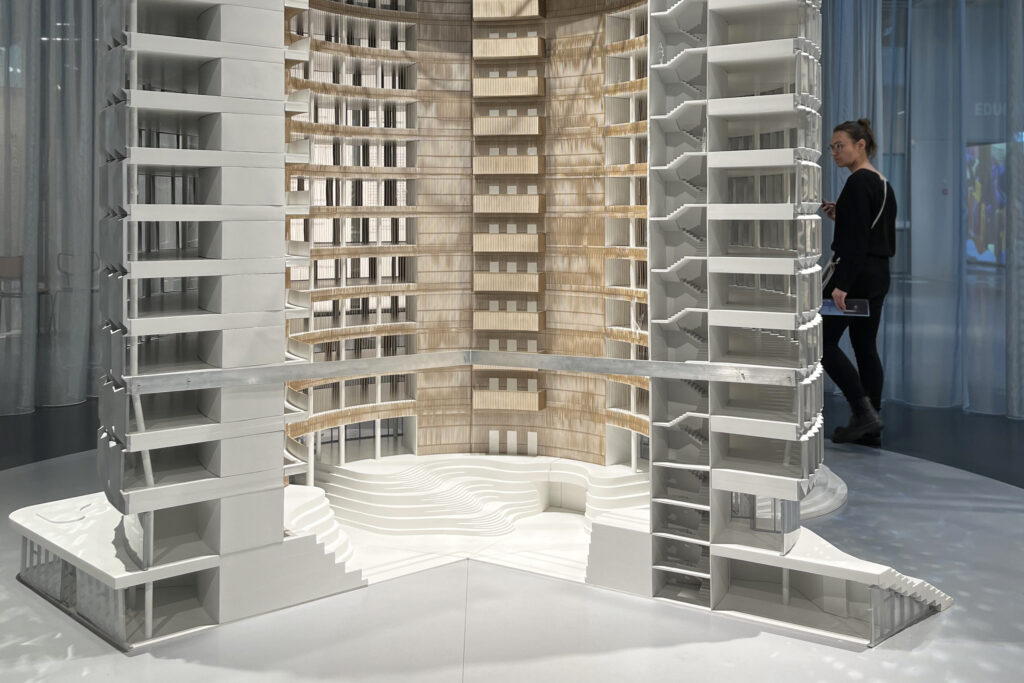
Despite its host space effectively being a large ‘black box’, not unlike a convention centre or theatre (with high-level track lighting and exposed trusswork), the exhibition is tactile, engaging and people-centred. This is thanks to elements such as pendant lighting, fabric screens and high quality Danish furniture – but also owing to the liberal use of material samples and hands-on interactives (images 5 & 6). A good example being Bohr’s Tower (a controversial and unpopular building in Copenhagen), where visitors are invited to re-imagine the façade by drawing over a supplied paper template. The variety and originality of the results on display demonstrate the level of engagement by those who take part, evidently of all ages and abilities (image 7).
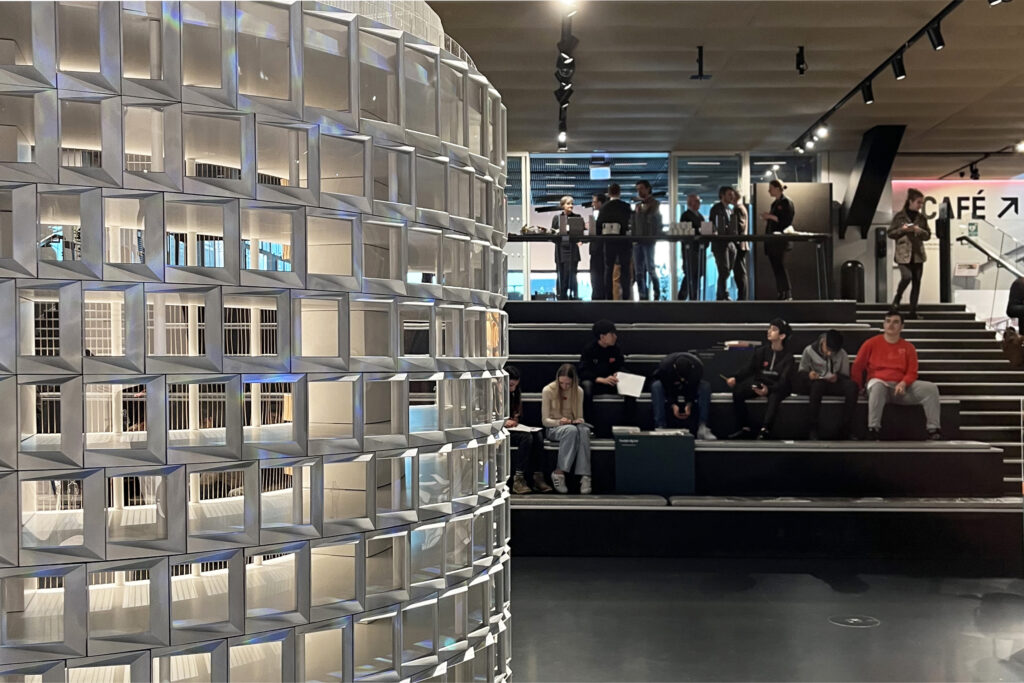
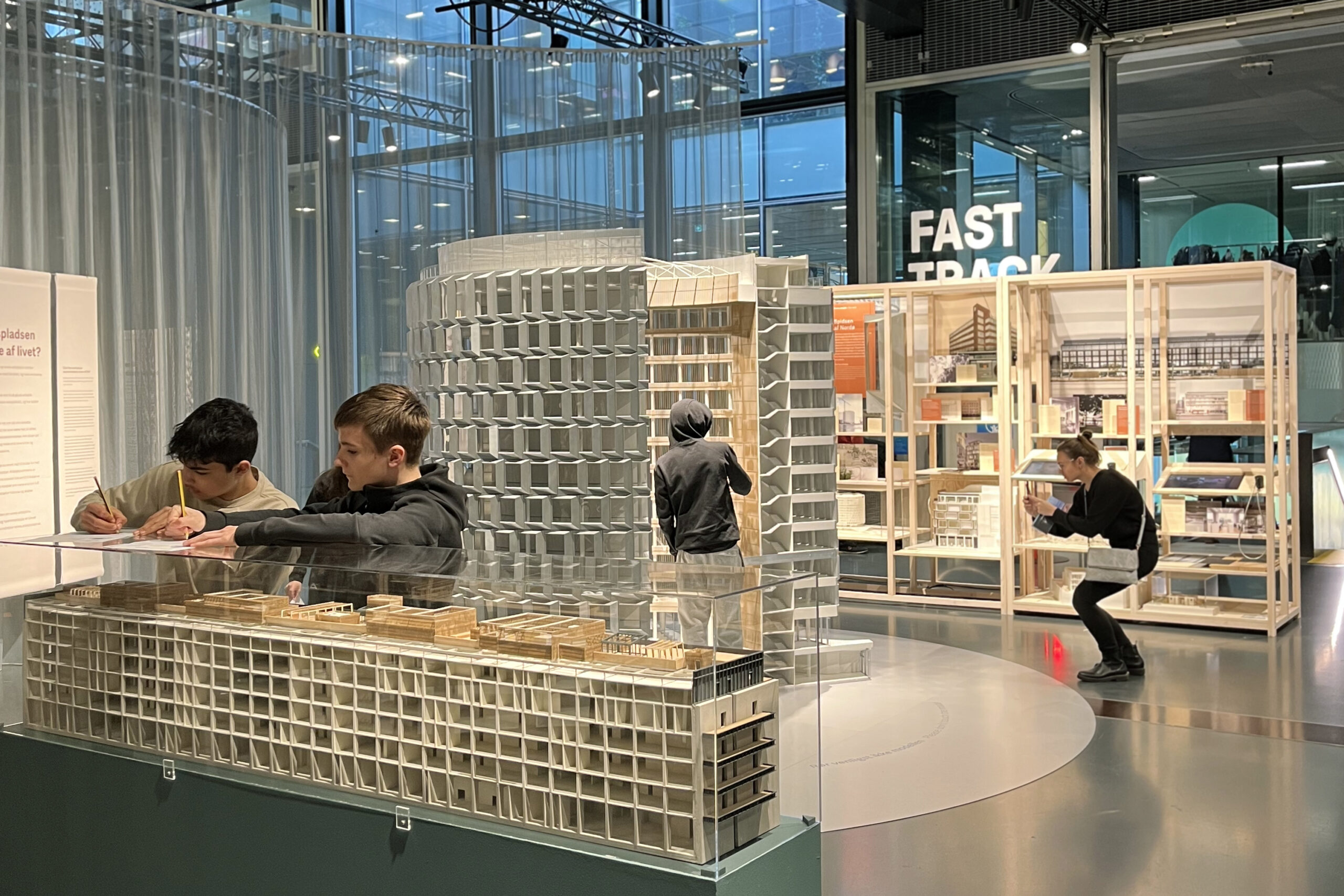
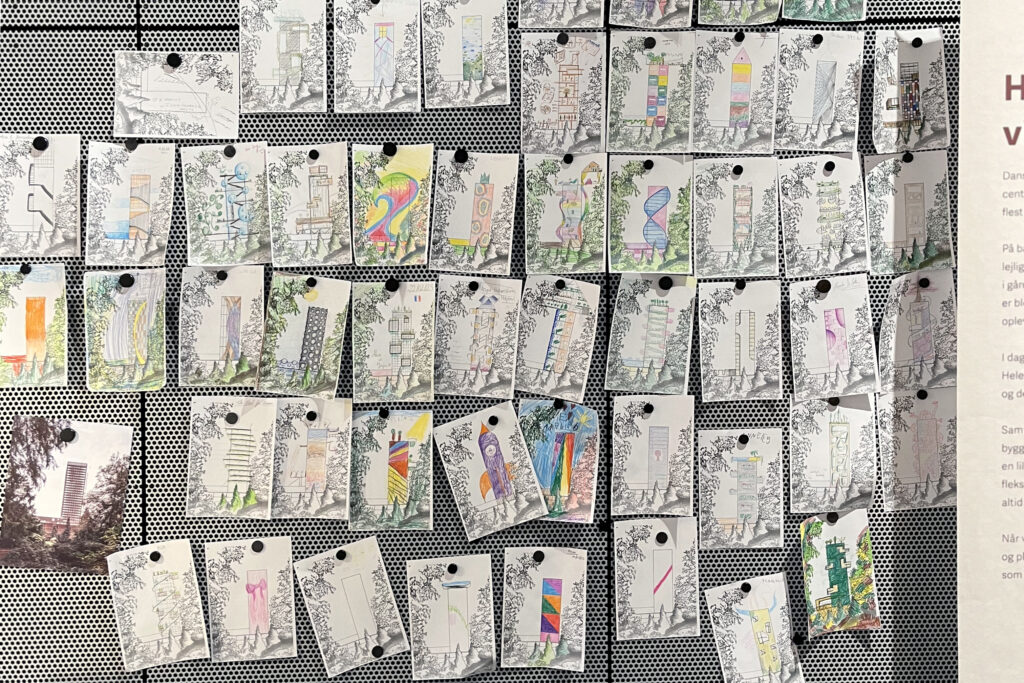
Many of notable projects by Vilhelm Lauritzen Arkitekter are considered Gesamtkunstwerks (or total works of art), where no separation or boundary is seen between the design intent at various scales – allowing details such as lighting, balustrades or doorhandles to be designed and considered part of the architectural experience. The exhibition ‘Our Architecture’ captures a sense of this approach, going beyond the basics of exhibition design, providing a user-centred experience, regardless of age or prior subject knowledge. Within this, technology adds a vital and stimulating layer of interest to a well-crafted physical space. The curation and execution of the project stands out as being appropriate for the task of bringing the work of Vilhelm Lauritzen Arkitekter to a worldwide audience.
Exhibition review: B. Couture & T. Ahmed, 2023
Footnote: About the host building
Designed by Danish architects OMA and completed in 2017, the purpose-built centre for architecture, DAC, sets interesting building precedent. with a design strategy that uses the architectural exhibition centre as a connecting element, ‘acrobatically’ threading it through the mixed-use scheme of offices, apartments, restaurants and a gymnasium.
Beyond the aims of the host building, the centre itself has a clear position on sustainability, and the role of architecture within the bigger picture;
… architecture has a vital role to play in overcoming many of the great challenges of the future. We believe that these challenges must be solved in interaction with different professional perspectives and that we, by pooling our resources together, can achieve greater reach and effect. Therefore, we work as an open platform between citizens and professionals, culture and business, Denmark and the world. An open platform for co-creation, open innovation and democratic engagement that contributes to creating economic, social, and environmentally sustainable development – both in Denmark and internationally. – DAC website